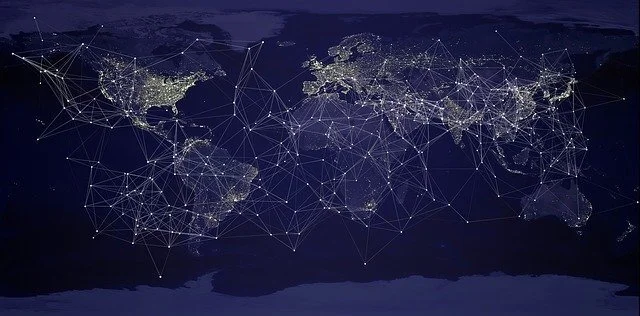Weekly News Update: March 1 - 7
FCC Announces Key Emergency Broadband Benefit Program Participation Deadlines
March 4, 2021 – The FCC’s Wireline Competition Bureau has released a Public Notice announcing upcoming filing deadlines for broadband providers that elect to participate in the FCC’s new Emergency Broadband Benefit (EBB) Program. As set out in the FCC’s recent Report And Order, to participate, a broadband provider must be an existing eligible telecommunications carrier (ETC) or be approved by the FCC. ETCs and their affiliates in the states or territories where the ETC is designated can elect to participate in the EBB Program by filing the appropriate information with Universal Service Administrative Company (USAC). Other providers, once approved, may elect to participate by submitting all required information to USAC. In the Public Notice, the Bureau sets the priority application deadline by which non-ETC providers may seek approval to participate in the EBB Program prior to commencement of household enrollments – the start of the program.
First, the Bureau has announced the date the priority application portal opens for non-ETC providers, as well as the deadline for priority applications:
Non-ETC Provider Application – the Bureau’s application portal opens March 8, 2021.
Non-ETC Provider Application Deadline – March 22, 2021.
The online application portal will be available on the Bureau’s webpage under the “Provider FCC Approvals” section.
Second, the Bureau has announced the portal opening date and deadline for any provider seeking expedited approval to use an alternative verification process to make household eligibility determinations in the EBB Program:
Expedited Alternative Eligibility Verification Process Portal Opens on March 8, 2021.
Expedited Alternative Eligibility Verification Process Deadline – March 22, 2021.
Third, the Bureau has announced when ETCs or FCC-approved broadband providers may begin submitting election notices to participate in the EBB Program:
Provider Election Notice Inbox Opens – elections may be filed with USAC beginning March 11, 2021, via email to EBBElection@usac.org.
The Bureau has created a new EBB Program webpage with additional information about the approval processes and how to submit an application: https://www.fcc.gov/emergency-broadband-benefit-program. At a later date, the Bureau will announce other administrative deadlines or milestones, such as when the EBB Program will begin and when providers may begin enrolling households in the program. The EBB Program and enrollment process is expected to begin in less than 60 days after the adoption of the EBB Program Order, which was February 25, 2021.
**********
Senators Say Definition Of Broadband Should Be 100 / 100 Mbps
March 4, 2021 – U.S. Senators Joe Manchin (D-WV), Rob Portman (R-OH), Michael Bennet (D-CO), and Angus King (I-ME) have sent a letter to the heads of the U.S. Departments of Agriculture and Commerce, the FCC, and the National Economic Council “to update federal broadband program speed requirements to reflect current and anticipated 21 century uses and align the definition of what constitutes high-speed broadband service across federal agencies.” They say new broadband service deployed with federal funding should provide symmetrical speeds of 100 Mbps, while allowing for “limited variation when dictated by geography, topography, or unreasonable cost.” The Senators note there are multiple definitions of high-speed broadband across federal agencies – the FCC defines broadband as service with speeds of 25/3 Mbps, while USDA defines broadband service as just 10/1 Mbps. Neither of these definitions, however, the Senators conclude, are adequate to support emerging technologies that Americans will rely on in the years ahead, “such as cloud computing, artificial intelligence, health IoT, smart grid, 5G, virtual and augmented reality, and tactile telemedicine.”
**********
FCC Filing Alert: Accessibility Recordkeeping Compliance Certifications And Contact Information Due April 1st
March 4, 2021 – The Federal Communications Commission has released a Public Notice to remind service providers and equipment manufacturers that are subject to Sections 255, 716, or 718 of the Communications Act, of their obligation to maintain records of their efforts to comply with accessibility requirements. These entities must file annual recordkeeping compliance certifications and required contact information no later than April 1, 2021, in the FCC’s Recordkeeping Compliance Certification and Contact Information Registry, online at https://apps.fcc.gov/rccci-registry/. Detailed filing instructions are available at https://apps.fcc.gov/edocs_public/attachmatch/DA-16-248A1.pdf.
**********
LRG Releases Data On Broadband Subscribers Added In 2020
March 4, 2021 – Leichtman Research Group, Inc. (LRG) has released data on the amounts of subscribers added by the largest U.S. broadband providers in calendar year 2020. LRG specializes in research and analysis on broadband, media, and entertainment industries. According to LRG’s data, broadband additions in 2020 were 190% of those in 2019, and more than in any year since 2008. The largest cable and wireline phone providers in the U.S. – representing about 96% of the market – acquired about 4,860,000 net additional broadband Internet subscribers in 2020, compared to a pro forma gain of about 2,550,000 subscribers in 2019. Data on the top two cable companies and top two wireline phone companies include the following:
Comcast – 30.6 million subscribers at the end of 2020 – 1.971 million net adds in 2020.
Charter – 28.879 million subscribers at the end of 2020 – to 2.215 million net adds in 2020.
AT&T – 15.384 million subscribers at the end of 2020 – lost 5,00 subs in 2020.
Verizon – 7.129 million subscribers at the end of 2020 – 173,000 net adds in 2020.
**********
USAC Files Second Quarter 2021 USF Contribution Base Data: $9.9 Billion
March 2, 2021 – The Universal Service Administrative Company (USAC) has filed data detailing the universal service fund (USF) contribution base to be used for the second quarter of calendar year 2021. The data shows the total collected interstate and international end-user revenue amount that will be used to determine the contribution factor for all universal service support mechanisms. USAC has determined that the total projected end-user revenue base for the second quarter of 2020 is $9,905,669,690.
To provide a comparison, the USF contribution base for the past five quarters are as follows:
First Quarter 2021: $10,068,712,553
Fourth Quarter 2020: $10,428,377,862
Third Quarter 2020: $10,219,123,520
Second Quarter 2020: $10,865,131,593
First Quarter 2020: $11,129,976,956
USAC’s estimated revenue base for the second quarter of 2021 was derived from projected collected revenue for April to June 2021 reported by telecommunications service providers using FCC Form 499-Q submitted in February 2021 – 4,621 reporting carriers, of which 3,245 are USF contributors and 1,376 are non-contributing de minimis carriers. As of February 17, 2021, USAC has yet to receive information from 184 non-de minimis telecommunications service providers that had previously submitted information to USAC. Upon Federal Communications Commission approval of the total USF contribution base, the quarterly funding requirements for the four USF support mechanisms, and projected administrative costs, the FCC will establish a quarterly USF contribution factor. USAC will then bill USF contributors on a monthly basis for their individual obligations based on the approved contribution factor.
**********
FCC Reopens Form 477 Filing Interface, Announces New March 15th Filing Deadline
March 1, 2021 – The FCC has announced that the Form 477 filing interface has been reopened. It also has announced that the new filing deadline for Form 477 data as of Dec. 31, 2020, is March 15, 2021. Additional information on filing FCC Form 477 is available on the FCC’s Form 477 Resources for Filers webpage at www.fcc.gov/form477.
**********
MobiTV Files For Chapter 11 Bankruptcy Protection
March 1, 2021 – MobiTV and its affiliates have filed for voluntary Chapter 11 bankruptcy relief in the U.S. Bankruptcy Court for the District of Delaware. MobiTV describes itself as a streaming TV platform enabling app-based pay TV services for broadband and wireless operators. IT is used by many small and large communications providers. According to a Press Release, “MobiTV has received a commitment for a $15.5 million debtor-in-possession financing facility that will support the Company for the duration of the restructuring process, providing MobiTV with the financial runway and flexibility to execute on a value-maximizing solution, which may include a going-concern sale under section 363 of the Bankruptcy Code.” In a letter to partners that have deployed its platform, MobiTV’s CEO said:
Please be assured that this action does NOT mean the Company is going out of business. We will continue to provide live and on-demand video solutions to our customers and will continue to review our services through the case proceedings. In connection with the Chapter 11 filing, the Company has secured important bridge funding commitments which will allow MobiTV to continue business as usual operations during the pendency of the proceeding.
**********
American Rescue Plan Act Of 2021 Includes Over $7 Billion For Off-Campus Broadband & Connected Devices
March 1, 2021 – The latest COVID–19 relief package, the American Rescue Plan Act of 2021, H.R. 1319, contains broadband funding for schools and libraries. Specifically, Section 3312 of the bill, Funding For E-Rate Support For Emergency Educational Connections And Devices, creates a $7.6 billion Emergency Connectivity Fund, which, during the COVID–19 pandemic, will provide monetary support for the purchase of broadband service or connected devices, modems, routers, and Wi-Fi hotspots. Supported services and devices may be used off-campus. The FCC would implement the program, and funding would be available until September 30, 2020. The bill was passed by the U.S. House of Representatives on February 27th.
**********
USDA Revising ReConnect Program Rules
March 1, 2021 – The U.S. Department of Agriculture is seeking comments on a final rule that will simplify requirements for USDA’s ReConnect Program. USDA believes the changes will make more companies eligible to participate in the broadband funding program. The proposed rule will: (1) Eliminate paperwork requirements and shorten the application process; and (2) Enable an applicant to submit a letter of credit as proof of its financial ability to complete a project. Comments must be submitted through https://www.regulations.gov by April 27, 2021. The changes are expected to take effect April 27, 2021, at the end of the 60-day comment period. Additional information is available from the summary published on February 26, 2021, in the Federal Register.
**********
FCC To Establish Rules For 3.45 GHz Band & Auction 100 Megahertz Of Spectrum
March 1, 2021 – At its March 17th open meeting, the FCC will vote on a Second Report And Order, Order On Reconsideration, and Order Of Proposed Modification that establishes rules for a new 3.45 GHz Service operating between 3.45 – 3.55 GHz. According to the draft item released by the FCC, the Second Report and Order, if passed, will do the following:
Make 100 megahertz of spectrum in the 3.45 GHz band available for flexible use wireless services throughout the contiguous United States;
Add a co-primary, non-federal fixed and mobile (except aeronautical mobile) allocation to the band;
Create a regime to coordinate non-federal and federal use of spectrum by adopting Cooperative Planning Areas and Periodic Use Areas and establishing coordination procedures;
Adopt a band plan and technical, licensing, and competitive bidding rules for the 3.45 GHz band, including performance requirements benchmarks intended to promote rapid deployment;
Require non-federal radiolocation operators to sunset operations within 180 days after the grant of new flexible-use licenses and provide for reimbursement of reasonable relocation costs; and
Require amateur operators to cease operations in the 3.45 GHz band within 90 days of the public notice announcing the close of the auction, while allowing those operations to continue in the 3.3-3.45 GHz portion of the band pending future FCC action in that spectrum.
The Order on Reconsideration will dismiss a petition for reconsideration filed by ARRL, the National Association for Amateur Radio, challenging the decision to sunset the amateur allocation in the 3.3 – 3.55 GHz band on procedural and substantive grounds. The Order of Proposed Modification proposes to modify the licenses of secondary, non-federal radiolocation operations operating in the 3.3 – 3.55 GHz band to reflect the new frequency assignment in the 2.9 – 3.0 GHz band.
**********










